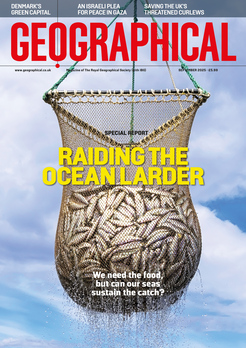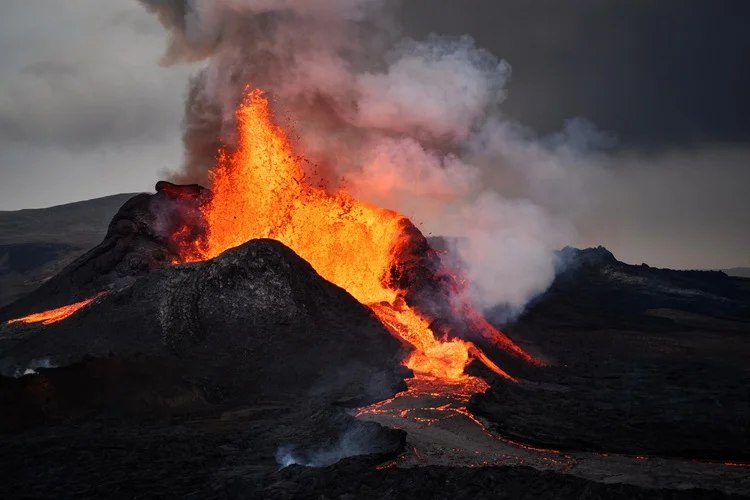
Discover the ten largest volcanoes across the world according to their elevation, from Bolivia to Argentina and Chile
By
There are more than 1500 active volcanoes in the world, with 50-70 erupting each year. Many of the most active volcanoes are located along the Pacific Rim in what is dubbed as the ‘Ring of Fire’.
But where exactly are the world’s largest volcanoes? While some may be dormant, and others are still active, find out the top ten below – according to their elevation – in reverse order:
10) Ata – 6,501m (21,329ft)
Submerged into water underneath Kagoshima Bay in Japan, Ata is one of several large calderas in southern Kyushu.
It was formed more than 40,000 years ago, with its last eruption occurring in the 9th century.
Want to test your knowledge? Take our volcanoes quizzes:
QUIZ: True or False: Volcanoes
9) Nevado Sajama – 6,542m (21,463ft)
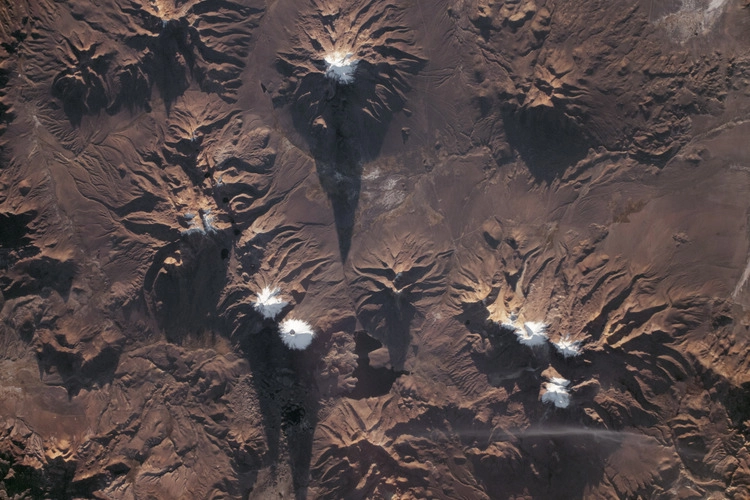
Nevado Sajama is located in Bolivia and is the highest point in the country. Along with other volcanoes in the area, it forms part of the Andean Volcanic Arc. This is where volcanic activity occurs due to the Nazca Plate sliding below the South American Plate.
The inactive stratovolcano has not erupted in recent recorded history, and is part of the Sajama National Park.
8) Tupungato – 6,570m (21,555ft)
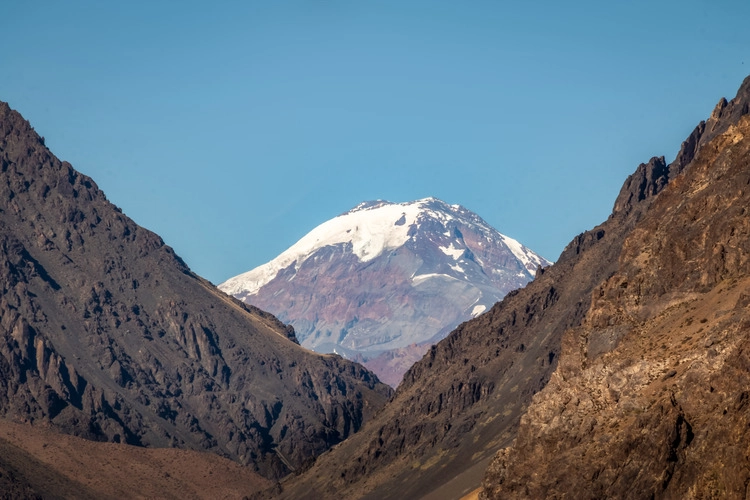
Located on the Argentina-Chile border, Tupungato was first climbed in 1897 during an expedition led by British mountaineer Edward Fitzgerald.
In 1947, a plane carrying six passengers and five crew crashed into the Tupungato mountain. Due to the high levels of snow and ice present, the plane remained undetected for more than fifty years before parts of its wreckage were discovered in 2000, including bleached clothing, fuselage parts and fragments of the plane’s engine.
7) Incahuasi – 6,621m (21,722ft)
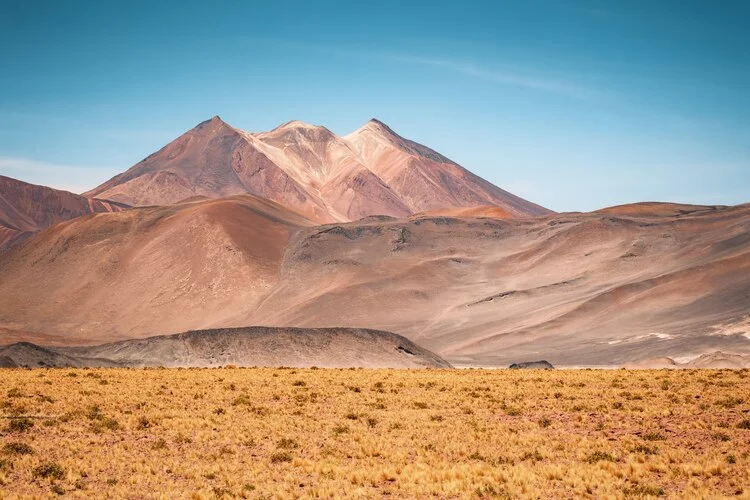
Incahuasi is found on the border of Argentina and Chile, and is made up of two stratovolcanoes – meaning it is comprised of alternating layers of ash and lava – in a 3.5km-wide caldera.
6) Nevado Tres Cruces Central – 6,629m (21,748ft)
This mighty volcano is the second-highest summit of the Nevado Tres Cruces massif, which is made up of two main summits – Cruces Central and Cruces Sur. Nevado Tres Cruces Central covers an area of more than 1,000 sq km on the border of Argentina and Chile, and is part of the Nevado Tres Cruces National Park established in 1994.
The volcano massif is not active, with the last eruption occurring 67,000 years ago.
5) Tipas – 6,600m (21,850ft)
The summit of Tipas is located in Argentina, south of the Chilean border and the tallest volcano in the world, Ojos del Salado. Tipas comprises a series of craters, lava flows, cones and lava domes stretching more than 25 sq km.
4) Llullaillaco – 6,739m (22,110ft)

Llullaillaco is a stratovolcano found on the border between Chile and Argentina. The volcano’s bottom was formed from thick lava flows, but part of this collapsed 150,000 years ago, meaning that the summit today has been formed on top of this first layer.
It is an active volcano, but its last reported activity was an eruption in 1877.
In 1999, three Inca child mummies were found at Llullaillaco during an expedition to the summit. Considered some of the world’s best-preserved mummies, they were dated back to 1500 as part of an Inca sacrifice ritual.
3) Nevado Tres Cruces – 6,748m (22,139ft)
Spanning an area of around 1000 sq km across the Chilean-Argentina border lies the Nevado Tres Cruces. It was first climbed in 1937 as part of the Second Polish Andean Expedition, by Stefan Osiecki and Witold Paryski.
The volcano massif is not active, with the last eruption occurring 67,000 years ago.
2) Monte Pissis – 6,793m (22,287ft)
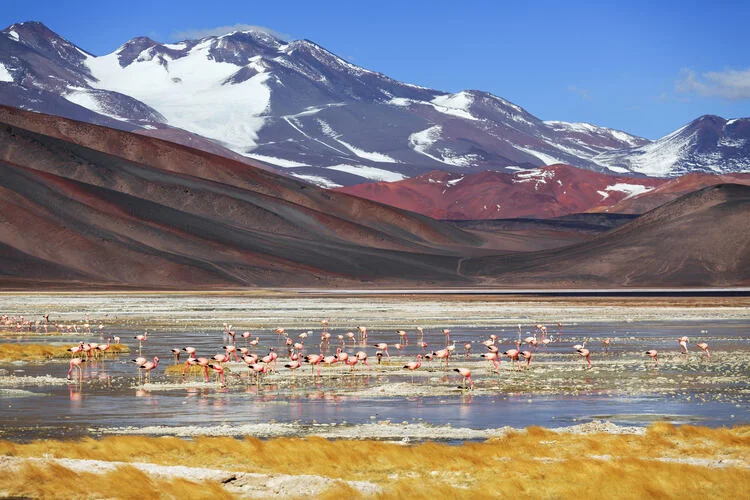
The third largest peak in South America, Monte Pissis is the largest inactive volcano in the world found in the Catamarca Province of Argentina near the Chilean border. The volcano was formed between 6.6 and 6.2 million years ago in the Puna Highlands of the Andes.
Monte Pissis is made up of several peaks: UPAME at 6,790m, Hombro at 6,430m, Media and 6,140m and Altar at 6,130m.
Cold temperatures – plummeting up to −30C (−22F) during the evening – as well as its sheer height make Monte Pissis a difficult climb. First climbed in 1937 by Stefan Osiecki and Jan Alfred Szczepański, here have been only an estimated twenty to thirty further expeditions.
1) Ojos del Salado – 6,893m (22,615ft)
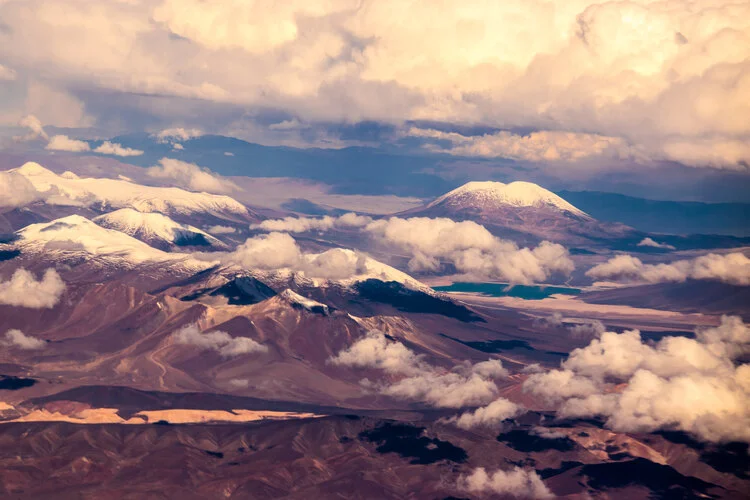
Taking top spot at number one is Ojos del Salado – often translated as ‘Eyes over the Salt Plain’ or ‘Source of the Salty River’ – the world’s highest active volcano and second-highest peak in the Andes, found along the Chile-Argentina border. It was first summited by a Polish explorer in 1937. Although no historical eruptions have been confirmed there, fumarolic activity – gas and steam being released from openings on its surface – have been spotted at Ojos del Salado.
Ojos del Salado is also home to the world’s largest lake – a crater around 100m in diameter – situated 6,390m up the volcano.

